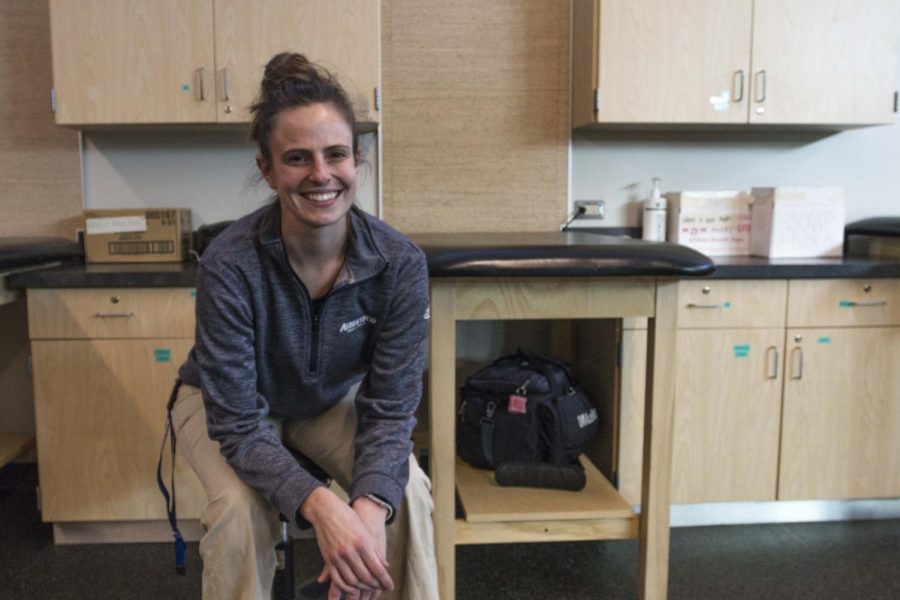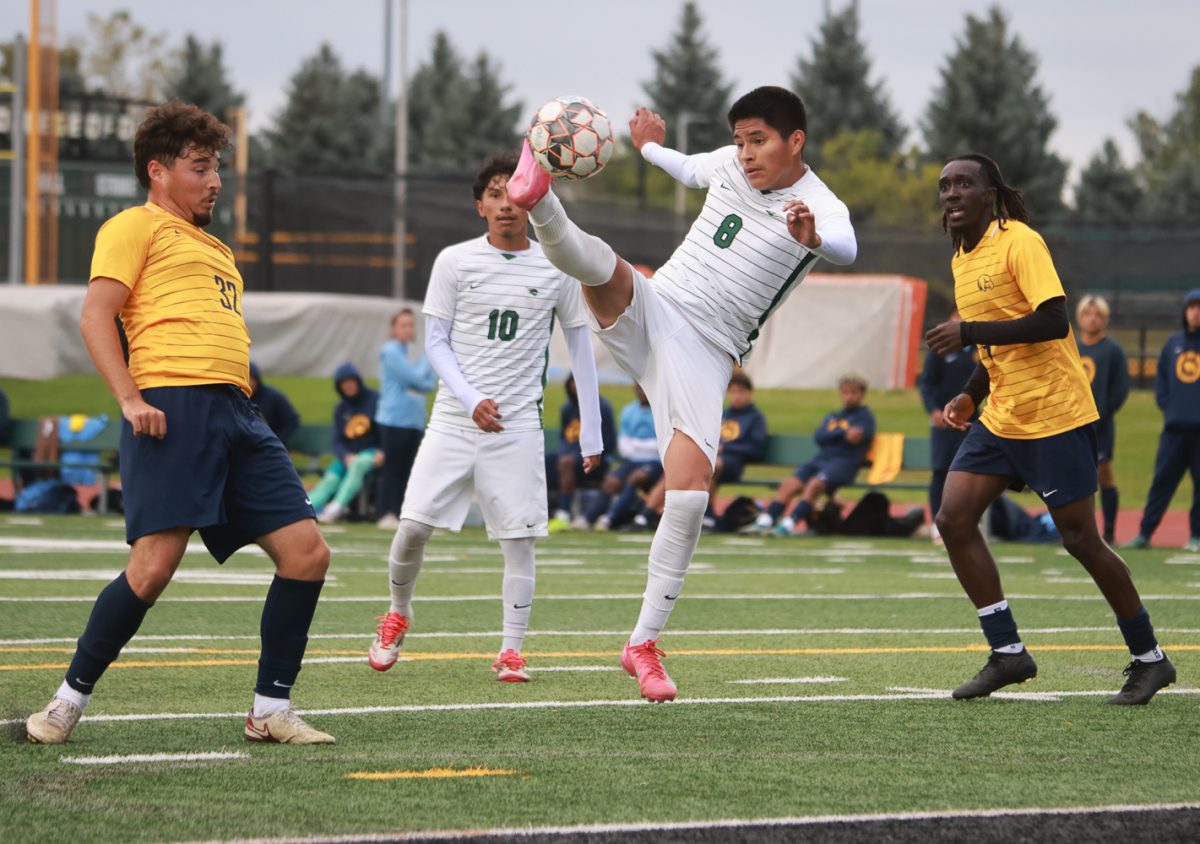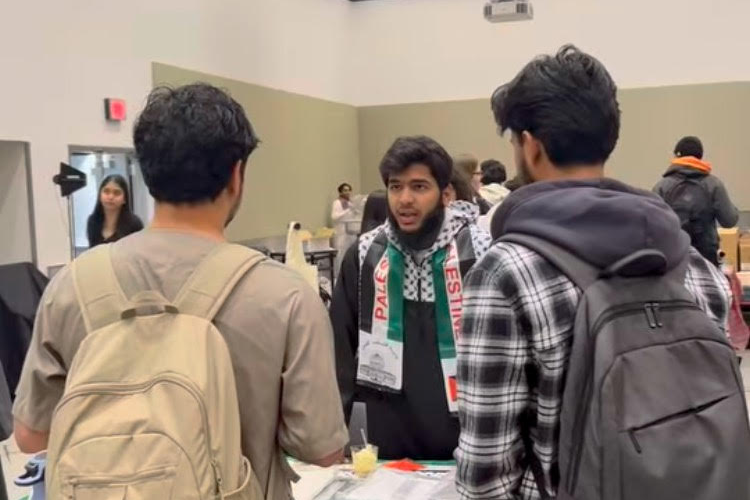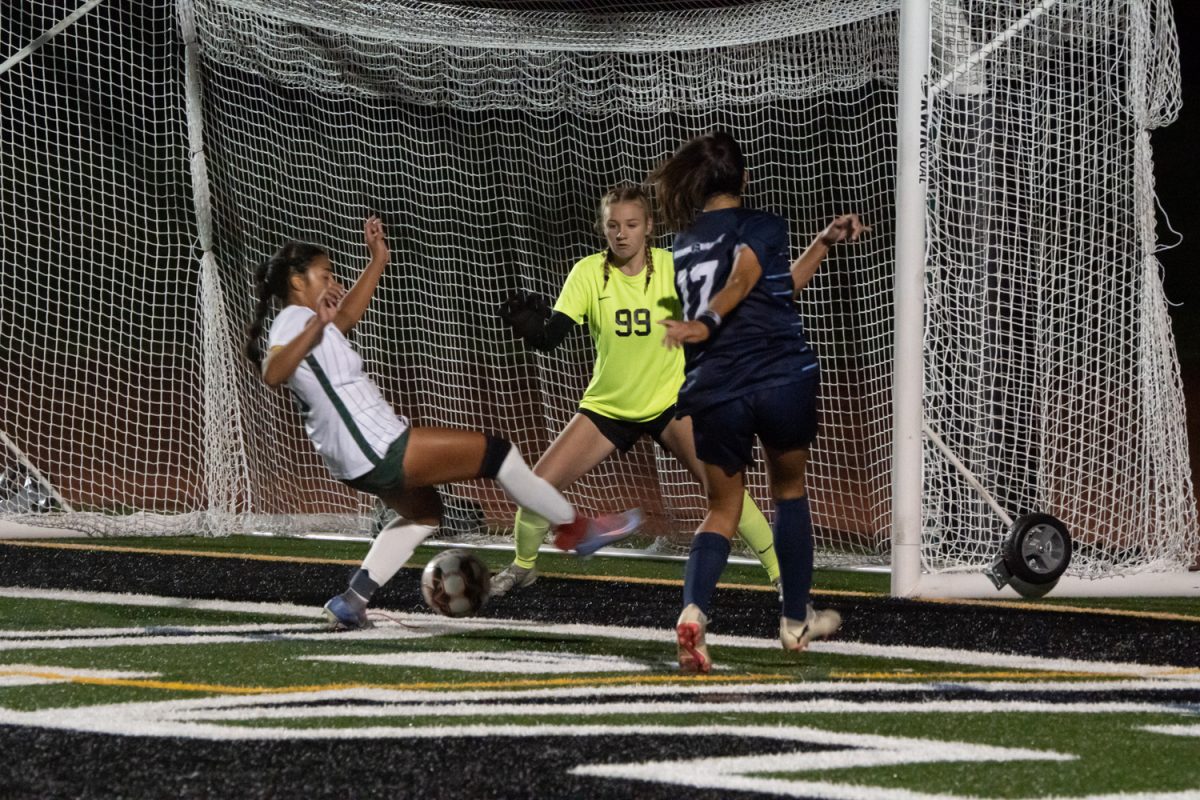Changes to COD’s Athletic Training Program?
Athletic Trainer Anne Hinley
April 2, 2018
Integral to being a Chaparral is the demanding of excellence and the innate drive to always push yourself forward beyond the limits of expectations. We must strive to push through every barrier of resistance and motivate ourselves to exceed into an ever-evolving pattern of self-improvement.
However, sometimes this zealous drive pushes our bodies to the extremes of their physicality. We strain, we tear, we pull, we cut, we bruise. We bleed, and sometimes in our eager efforts we fall down hard. Luckily for injured athletes, the excellent College of DuPage’s athletic training team steps in to help them back up and heal them into action.
Whenever athletes are in dire straits, the athletic training team is there to aid their physical maladies and help them recuperate to get back to competing as soon as possible. Contracted by the school, the staff currently comprises of outreach athletic trainers Nathan Smith and Anne Hinley, who are both employed by the independent Athletico. Under their tutelage, five students (four Chaps, and one athletic training student from North Central College working on her curriculum-mandated clinical hours), aid in maintaining the health of COD athletes and ensure their utmost physical potential.
Currently in her fifth year contracted to COD, Hinley’s tenure has seen the ambitious construction of a new athletic training facility and the installation of new rehab equipment. The trainers and students keep a watchful eye at home competitions and aid in any athlete’s duress. Often for further care or rehabilitation, athletes must visit the rehab facility strategically placed in the Field House.
Hinley said there are many factors that inspire students to pursue a career as an athletic trainer.
“It’s really been a mix of everything,” she said. “Some students do it just because it is a job that pays. Others are interested in the profession. We had a former student worker who is now in the athletic training program at North Central. Some other students were interested in the other healthcare professions such as physical therapy or occupational therapy. We even had a former student who is now at a nursing program.”
Student worker Sam Naughton expressed her passion, “I love sports, and my entire life has been centered around sports. I have often gotten hurt while running track and playing tennis, so I have been on the athletic side of having to go through treatment. I also really like helping people. I feel this job is a good way for me to still be working with sports and athletes, while helping those in need get back to playing as quick as possible. I truly can understand the frustrations of wanting to get back to playing as quick as possible.”
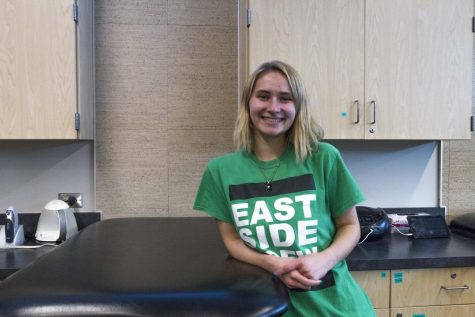
Naughton intends to continue her passion at the athletic training program at Illinois State University. She said her job as a student trainer progresses her in her academic endeavours and provides her a leg up on the competition.
“I have already learned how to tape a bunch,” she said. Anne will quiz me on what specific stretches are for, what to do in certain situations, and what to ask when hurt athletes need evaluation. There are certain things you will not learn in class until you are out there experiencing the job. So I get a head start because I get to learn some of the things the classes won’t teach you.”
Hinley elaborated, “A lot of the high-level Division I schools do not let you work on the athletes until you are a senior.” She further explained, there is a new athletic training curriculum coming into effect next year which is based around a more hands-on experience instead of students just observing.
The collegiate Athletic Training program certified through the Commission on Accreditation of Athletic Training Education (CAATE) is having the curriculum restructured. Before, students only needed to get a bachelor’s degree. You would go through the athletic training curriculum, take a certification exam, and pass it to become a certified athletic trainer. However, in an effort to eliminate the turnover of some students changing their profession, athletic training is turning into an entry-level master’s program.
Hinley believes COD cannot institute a CAATE accredited athletic training curriculum because there are requirements schools must make, and being a four-year institution is one of them.
This raises the question as to why the central premises is being undermined of community colleges being institutions where students can affordably receive transferable credits into their profession-structured academic careers at accredited four-year colleges?
Hinley believes, “The required courses need to be through their athletic trainers because a lot of the staff athletic trainers are also the professors of the courses. The courses you take are like injury assessment, modalities, rehab, administration, anatomy, and kinesiology.”
To circumnavigate this inconvenience, Naughton has taken a transferrable anatomy class along with gen-eds required for her degree at Illinois State.
When further discussing classes students can take to enhance their academic endeavours in athletic training, Hinley explained there used to be more classes available. They were removed from the curriculum because former athletic trainers who worked here did not want to teach them.
“However, last year the athletic director at the time asked Nate and I if we were interested in teaching them,” said Hinley.
“The three classes that were actually in the catalogue were Intro to Athletic Training, a taping course and a clinical application course,” she stated.
Because Hinley has a master’s degree she can teach athletic training courses here, and she expressed her interest in teaching a course over the summer term.
Part of the excitement of athletic training is it is always on the cutting edge of medical breakthroughs. Trainers are constantly looking for ways to move their field forward and improve their capacity to offer exceptional medical care. Hinley would love to see the addition to COD’s facilities of a treadmill, an upper-arm bike and the initiation of more aquatic therapy in the pool to further the effectiveness of the team’s rehabilitation care. Taking care of the student-athlete’s well-being is of utmost importance.
Hinley explained why students interested in sports and medicine should consider athletic training as a career path, “We do this job because we love what we do; it’s not for the money. It’s all about the great people you get to work with. You build great relationships with the athletes and the coaches. We also get the opportunity to help others. It’s a really rewarding experience getting athletes back to health.”
*March is National Athletic Training Month



